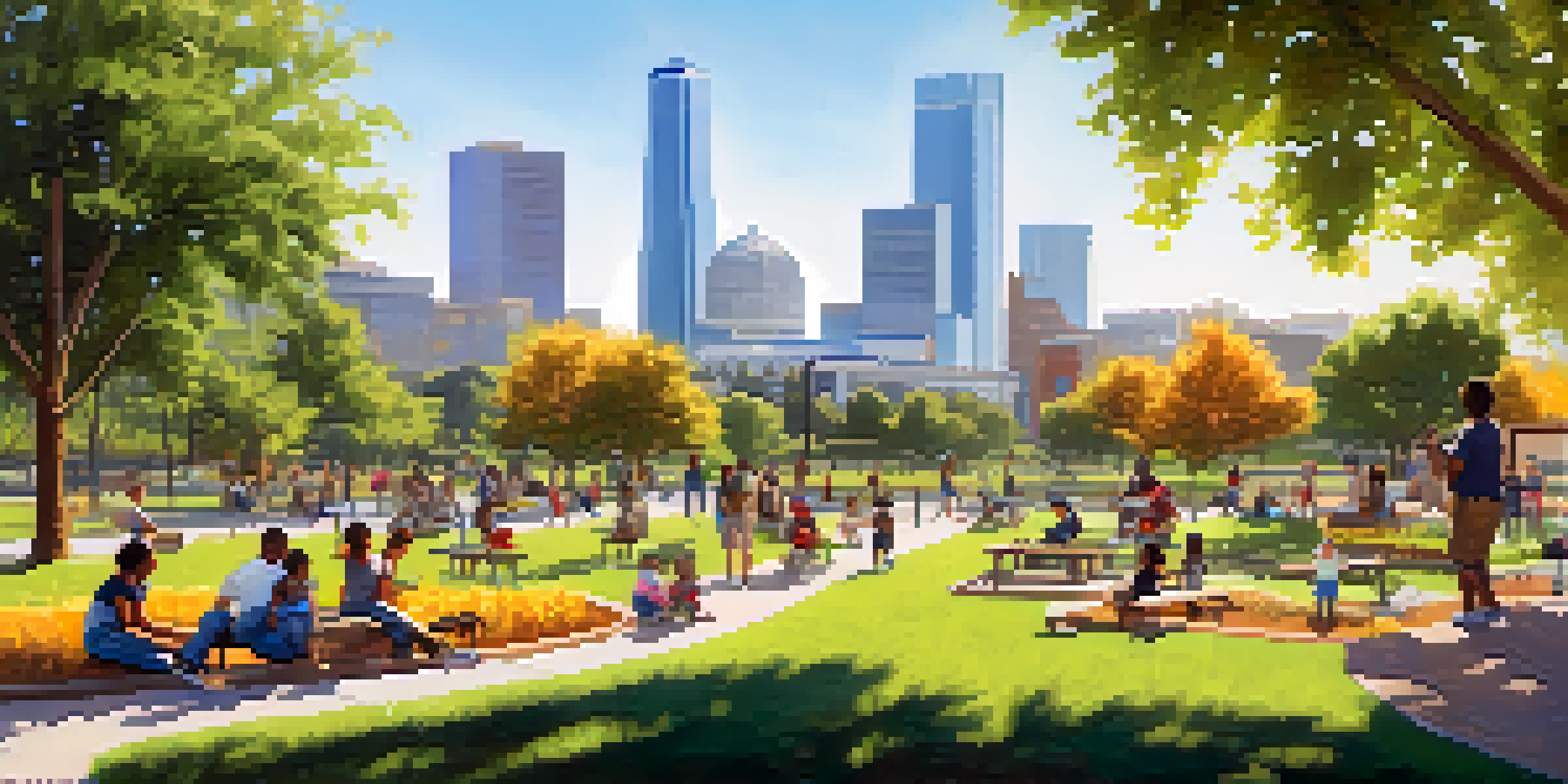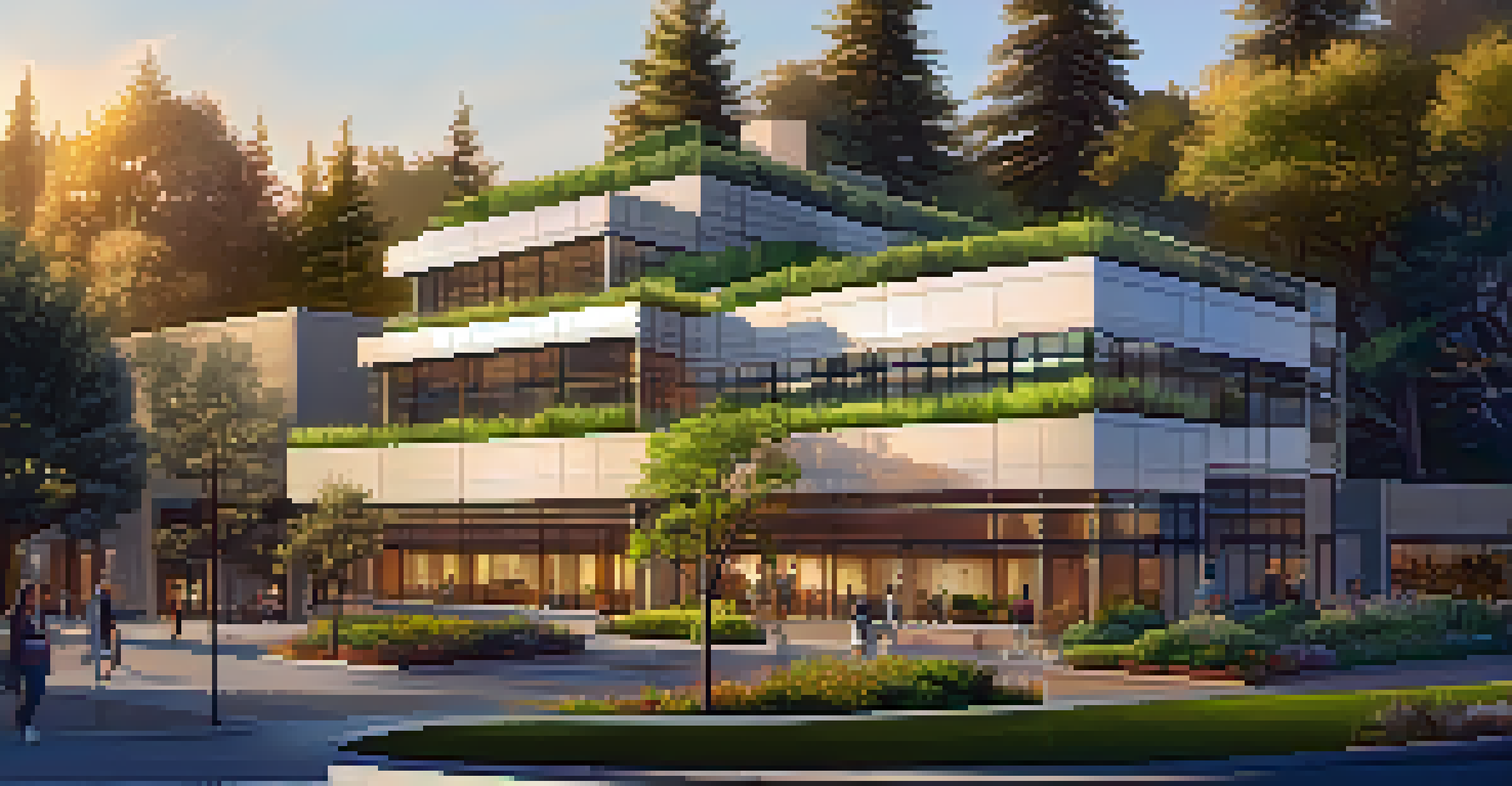Sacramento's Green Building Initiatives for a Sustainable Future

Introduction to Sacramento's Green Building Movement
Sacramento, the capital of California, is leading the charge in sustainable urban development. The city recognizes the importance of green building initiatives in addressing climate change and promoting environmental health. By implementing various programs and guidelines, Sacramento aims to create a more sustainable future for its residents.
Sustainability is not a destination, but a journey we embark on together.
The push for green buildings is not just about construction; it's about fostering a culture of sustainability. Local governments, businesses, and community members are collaborating to ensure that eco-friendly practices are at the forefront of development. This holistic approach is crucial for long-term ecological and economic benefits.
As we delve deeper into Sacramento's initiatives, we will explore the various strategies being employed, from innovative building designs to policy changes that encourage sustainable practices. By understanding these efforts, we can appreciate the city's commitment to a greener tomorrow.
Key Green Building Policies in Sacramento
Sacramento has implemented several key policies aimed at promoting green building standards. The city adopted the California Green Building Standards Code, which sets minimum requirements for energy efficiency, water conservation, and indoor air quality. This code serves as a foundational framework for all new construction and significant renovations.

In addition to state regulations, Sacramento has developed local ordinances that incentivize sustainable practices. For instance, developers can receive expedited permit processing when they incorporate green building features. This not only encourages eco-friendly construction but also streamlines the development process, benefiting both builders and the community.
Sacramento Leads in Green Building
Sacramento is at the forefront of sustainable urban development, implementing initiatives that combine eco-friendly practices with community engagement.
These policies reflect Sacramento's commitment to creating a sustainable urban environment. By establishing clear guidelines and incentives, the city is making it easier for developers to embrace green building practices while ensuring that new projects align with environmental goals.
Innovative Green Building Projects in Sacramento
One of the most notable examples of green building in Sacramento is the California State University, Sacramento's new student housing complex. This project incorporates solar panels, energy-efficient appliances, and sustainable landscaping to reduce its environmental impact. It's a prime example of how modern design can harmonize with eco-friendly practices.
The future will be green, or not at all.
Another impressive initiative is the downtown Sacramento building that received LEED Platinum certification. This designation signifies that the building meets the highest standards for sustainability, including energy efficiency and water conservation. Such projects not only set benchmarks for future developments but also inspire other cities to adopt similar practices.
These innovative projects showcase how Sacramento is transforming its urban landscape into a model for sustainability. By prioritizing green building initiatives, the city is making strides toward reducing its carbon footprint and enhancing the quality of life for its residents.
Community Engagement in Green Building Initiatives
Community engagement plays a vital role in Sacramento's green building initiatives. The city actively involves residents, businesses, and organizations in discussions about sustainable development. This collaborative approach ensures that the community's needs and values are considered in the planning process.
Workshops, public forums, and outreach programs are regularly held to educate residents about the benefits of green building. By fostering awareness and understanding, Sacramento empowers its community to take an active role in sustainability efforts. This grassroots involvement is essential for the success of any initiative.
Economic Gains from Sustainability
Green building practices not only benefit the environment but also provide significant economic advantages, including cost savings and increased property values.
Engaging the community not only enhances support for green building projects but also cultivates a sense of ownership. When residents feel connected to their environment, they are more likely to advocate for sustainable practices, creating a ripple effect that extends beyond individual projects.
The Role of Technology in Sustainable Building
Advancements in technology are revolutionizing the way buildings are designed and constructed in Sacramento. Smart building technologies, such as energy management systems and automated lighting, are becoming increasingly common. These innovations help reduce energy consumption and enhance overall building efficiency.
Additionally, Sacramento is embracing new construction materials that are both sustainable and durable. For example, recycled materials and low-VOC (volatile organic compounds) paints are being utilized to minimize environmental impact. This shift towards innovative materials is pivotal in reducing waste and promoting healthier indoor environments.
By integrating technology into the building process, Sacramento is setting a standard for modern construction practices. These technological advancements not only contribute to sustainability but also improve the quality of life for residents by creating more efficient and healthier living spaces.
Economic Benefits of Green Building Practices
While the environmental benefits of green building are widely recognized, the economic advantages are equally significant. Sacramento's green initiatives can lead to cost savings for both builders and homeowners through reduced energy and water bills. Over time, these savings can offset the initial investment in sustainable features.
Moreover, green buildings tend to have higher property values and attract more tenants. As demand for eco-friendly spaces increases, developers who prioritize sustainability may find themselves at an advantage in the market. This trend underscores the idea that going green is not just good for the planet; it’s good for business, too.
Community Engagement is Key
Active community involvement in discussions and education about sustainable development ensures that Sacramento's green initiatives align with residents' needs and values.
In Sacramento, the economic impact of green building extends beyond individual properties. By fostering a green economy, the city can create jobs in construction, energy efficiency, and sustainable design, further contributing to its overall growth and resilience.
Future Outlook for Sacramento's Green Building Initiatives
Looking ahead, Sacramento's green building initiatives are set to evolve and expand. The city plans to enhance its sustainability goals by integrating more renewable energy sources and innovative building techniques. As technology continues to advance, so too will the strategies employed to create eco-friendly spaces.
Community involvement will remain a cornerstone of Sacramento's approach. By keeping residents engaged and informed, the city can adapt its initiatives to better serve the needs of the population. This ongoing dialogue ensures that sustainability remains a shared goal among all stakeholders.

As Sacramento continues to lead in green building practices, it sets a positive example for other cities to follow. The commitment to sustainability not only benefits the environment but also enhances the quality of life for residents, paving the way for a truly sustainable future.